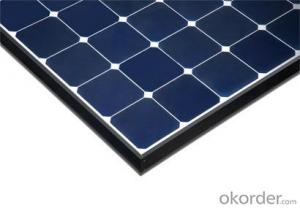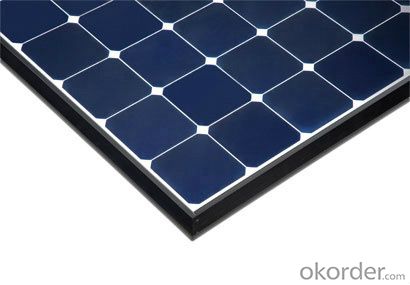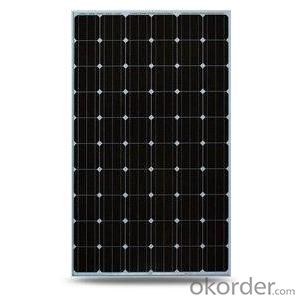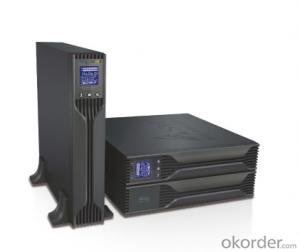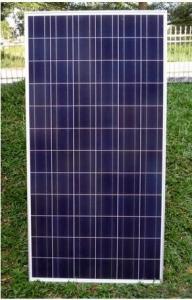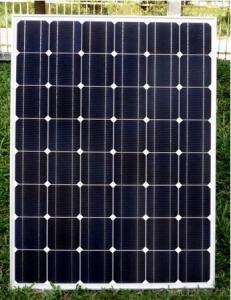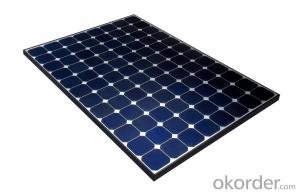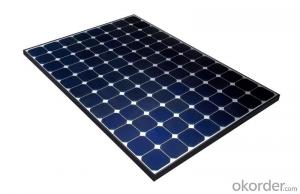Solar Energy Systems for Homes - CNBM On Grid System 60000W with Certificate UL TUV CE
- Loading Port:
- Shanghai
- Payment Terms:
- TT OR LC
- Min Order Qty:
- 10 watt
- Supply Capability:
- 1000 watt/month
OKorder Service Pledge
OKorder Financial Service
You Might Also Like
Specification
CNBM On Grid System 60000W with Certificate UL TUV CE
Product description
They range from small residential and commercial rooftop systems to large utility-scale solar power stations. Unlike stand-alone power systems, a grid-connected system rarely includes an integrated battery solution, as they are still very expensive. When conditions are right, the grid-connected PV system supplies the excess power, beyond consumption by the connected load, to the utility grid.
Connection of the photovoltaic power system can be done only through an interconnection agreement between the consumer and the utility company. The agreement details the various safety standards to be followed during the connection.[4]
The price of solar power, together with batteries for storage, has continued to fall so that in many countries it is cheaper than ordinary fossil fuel electricity from the grid (there is "grid parity").[4]
Off-the-grid is a system and lifestyle[1] designed to help people function without the support of remote infrastructure, such as an electrical grid. In electricity, off-grid can be stand-alone power system or mini-grids typically to provide a smaller community with electricity. Off-grid electrification is an approach to access electricity used in countries and areas with little access to electricity, due to scattered or distant population. The term off-the-grid (OTG) can refer to living in a self-sufficient manner without reliance on one or more public utilities. People who adopt this lifestyle are called off-gridders.[2]
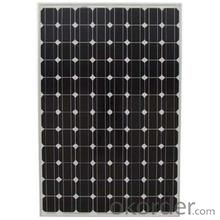
Application
Industrial
Commercial
Residential
Feature
Residential, grid-connected rooftop systems which have a capacity more than 10 kilowatts can meet the load of most consumers.[2] They can feed excess power to the grid where it is consumed by other users. The feedback is done through a meter to monitor power transferred. Photovoltaic wattage may be less than average consumption, in which case the consumer will continue to purchase grid energy, but a lesser amount than previously. If photovoltaic wattage substantially exceeds average consumption, the energy produced by the panels will be much in excess of the demand. In this case, the excess power can yield revenue by selling it to the grid. Depending on their agreement with their local grid energy company, the consumer only needs to pay the cost of electricity consumed less the value of electricity generated. This will be a negative number if more electricity is generated than consumed.[3] Additionally, in some cases, cash incentives are paid from the grid operator to the consumer.
Packaging
With carton and box
- Q: What is the difference between a solar tracker and a fixed-tilt solar energy system?
- A solar tracker is a system that follows the movement of the sun throughout the day, adjusting the position of solar panels to maximize sunlight exposure. On the other hand, a fixed-tilt solar energy system consists of solar panels that are mounted at a fixed angle, typically facing south, and do not move throughout the day. The main difference lies in their ability to track the sun's movement, resulting in increased energy production for solar trackers compared to fixed-tilt systems.
- Q: How long do solar energy systems last?
- Solar energy systems typically have a lifespan of 25 to 30 years, with some components lasting even longer. However, regular maintenance and occasional replacements may be required to ensure optimal performance and efficiency throughout their lifetime.
- Q: What is the impact of fire on solar panels?
- The impact of fire on solar panels can be quite significant and detrimental. Fires can cause direct damage to the panels, resulting in their complete destruction or rendering them inoperable. The high temperatures generated by fires can melt or warp the delicate components of the solar panels, such as the photovoltaic cells and the wiring. This damage can make the panels incapable of producing electricity. Furthermore, the smoke and soot generated by fires can cover the surface of the solar panels, reducing their efficiency by obstructing sunlight and decreasing the amount of light that can be absorbed. This can lead to a significant reduction in power output from the panels. In addition to the physical damage caused by fires, the heat and flames can also pose a safety risk to the surrounding area. Solar panels are typically installed on rooftops or in open areas, making them vulnerable to fire hazards. If a fire occurs near or on a solar panel, it can increase the risk of the fire spreading and causing further damage to the property. To mitigate the impact of fire on solar panels, it is crucial to have proper fire safety measures in place. This includes using fire-resistant materials for the installation of solar panels and ensuring that the panels are adequately protected from potential fire sources. Regular maintenance and cleaning of the panels are also essential to remove any debris or soot that may accumulate, thus maximizing their efficiency and minimizing the risk of damage in the event of a fire. Overall, the impact of fire on solar panels can be severe, leading to physical damage, decreased efficiency, and safety risks. It is crucial to take necessary precautions and implement fire safety measures to protect solar panels and minimize potential losses.
- Q: What is the expected return on investment for a solar energy system?
- The expected return on investment for a solar energy system can vary depending on several factors such as the initial cost, location, available incentives, and energy usage. Generally, a solar energy system is expected to provide a positive return on investment over its lifetime. The initial cost of installing a solar energy system can be a significant investment, including the cost of solar panels, inverters, and installation. However, with the decreasing costs of solar technology in recent years, the upfront expense has become more affordable. The location of the solar energy system plays a crucial role in determining the expected return on investment. Areas with higher solar irradiance and longer sunshine hours tend to generate more electricity, resulting in a higher return. Additionally, the availability of net metering policies, which allow excess electricity to be fed back into the grid and credited to the owner, can further enhance the return on investment. Incentives and subsidies provided by governments and local authorities can significantly impact the expected return on investment. Many countries offer tax credits, grants, and rebates to encourage the adoption of solar energy systems. These incentives can reduce the initial cost and accelerate the payback period, enhancing the overall return on investment. Furthermore, the energy usage of the property is a critical factor in determining the expected return on investment. Higher electricity consumption means a greater opportunity for the solar energy system to offset utility bills, resulting in higher savings and an improved return on investment. While the specific return on investment can vary, studies have shown that solar energy systems typically pay for themselves within 5 to 10 years and continue generating free electricity for several decades. This extended period of energy production allows for significant savings on utility bills and a positive return on investment over the system's lifetime. Overall, investing in a solar energy system can provide long-term financial benefits through reduced electricity costs, potential revenue from excess electricity generation, and increased property value. It is crucial to perform a thorough evaluation considering the specific factors mentioned above to determine the expected return on investment for a solar energy system in a particular scenario.
- Q: Can a solar energy system be installed on a building with a thatched roof?
- Yes, it is possible to install a solar energy system on a building with a thatched roof. However, there are a few considerations to take into account. Thatched roofs are made of dry vegetation and require special care to prevent fire hazards. Therefore, it is important to consult with a professional solar installer who has experience working with thatched roofs. The solar panels can be mounted on the roof, but extra precautions need to be taken to ensure the thatch is not damaged during installation. The installer will need to find appropriate attachment points that do not compromise the integrity of the thatch. It may be necessary to reinforce the roof structure to support the weight of the panels, as thatched roofs tend to be more delicate compared to conventional roofs. Additionally, the positioning of the solar panels is crucial. Thatched roofs often have a pitch or slope, and the panels need to be installed at an angle that maximizes sun exposure. The installer will need to assess the roof's orientation and shading to determine the optimal placement for the panels. Furthermore, regular maintenance is essential for both the solar panels and the thatched roof. The thatch should be inspected regularly for wear and tear, and any damaged areas should be repaired promptly to prevent leakage. Similarly, the solar panels need to be cleaned periodically to ensure optimal performance. The installer can provide guidance on maintenance schedules and procedures. In summary, while it is possible to install a solar energy system on a building with a thatched roof, it requires careful planning and expertise. Consulting a professional solar installer who understands the intricacies of thatched roofs is crucial to ensure a safe and efficient installation.
- Q: What is the role of energy management systems in a solar energy system?
- The role of energy management systems in a solar energy system is to optimize and control the flow of energy from the solar panels to various components of the system. These systems monitor and manage the production, storage, and usage of energy, ensuring that the solar energy generated is efficiently utilized and stored for later use. Energy management systems also enable monitoring and analysis of energy consumption patterns, allowing for better decision-making and resource allocation. Overall, these systems play a crucial role in maximizing the performance and effectiveness of a solar energy system.
- Q: Can solar energy systems be used in camping or outdoor activities?
- Certainly, solar energy systems are applicable for camping or outdoor activities. In reality, solar power proves to be an excellent solution for living off-grid or when you are away from conventional power sources. You can employ portable solar panels, also known as solar chargers, to harness the sun's energy and convert it into electricity, thus powering various camping or outdoor devices. Using solar energy systems for camping offers numerous advantages. Firstly, they provide a renewable and sustainable power source, reducing your reliance on fossil fuels or disposable batteries. This not only benefits the environment but also saves you money in the long term. Solar energy systems can charge a wide range of devices, including smartphones, tablets, laptops, cameras, portable speakers, and even small appliances like coolers or lights. This ensures that you can stay connected, capture memories, or enhance your camping experience without worrying about battery life. Portable solar panels are lightweight, compact, and easy to carry, making them perfect for camping or outdoor activities. They can be set up in various ways, such as attaching them to a backpack, placing them on the ground, or mounting them on a tent or RV. Some solar chargers even feature integrated batteries, allowing you to store energy for later use and ensuring a constant power supply, even on cloudy days or at night. It is important to note that the efficiency and power output of solar energy systems may vary depending on factors like weather conditions, panel quality, and the angle at which they are positioned towards the sun. Therefore, it is crucial to select reliable and reputable solar products that suit your specific needs. All in all, solar energy systems offer a fantastic option for camping or outdoor activities, providing a clean, reliable, and sustainable power source. Whether you need to charge your devices, illuminate your campsite, or power small appliances, solar power can greatly enhance your outdoor experience.
- Q: What are the different financing models for installing solar energy systems?
- Installing solar energy systems offers various financing models to cater to individual preferences and financial capabilities. Here are some commonly used financing options: 1. Complete Purchase: The most direct approach is to outright purchase the solar energy system. Although it requires a significant upfront investment, it grants the homeowner or business owner full access to the benefits and incentives associated with solar energy, such as tax credits and reduced utility bills. 2. Solar Loans: Many financial institutions provide specialized loans for solar installations, offering lower interest rates and longer repayment terms compared to conventional loans. With a solar loan, the system owner makes monthly payments to the lender while enjoying the financial advantages of lower utility bills and potential tax credits. 3. Power Purchase Agreements (PPAs): A PPA involves a contract between the solar system owner and a third-party solar provider. Under this agreement, the solar provider installs and maintains the system on the customer's property, and the customer agrees to purchase the electricity generated by the system at a predetermined rate. This eliminates the need for upfront costs and allows immediate savings on the electricity bill. 4. Solar Leases: Similar to PPAs, solar leases involve a third-party solar provider installing and maintaining the system. However, instead of purchasing the electricity, the customer pays a fixed monthly lease payment for the use of the solar energy system. While this option may not provide as much savings as other financing models, it requires minimal upfront investment. 5. Property Assessed Clean Energy (PACE) Financing: PACE financing enables property owners to finance the installation of solar energy systems through an assessment on their property tax bill. The loan is repaid over a period of time, typically 10 to 20 years, through an additional assessment on the property taxes. PACE financing is particularly advantageous for property owners who may not qualify for traditional loans or prefer to spread out the cost of the solar installation over a longer duration. These examples highlight the different financing models available for installing solar energy systems. It is crucial to carefully evaluate each option, considering factors such as upfront costs, long-term savings, and individual financial goals, to determine the most suitable financing arrangement for specific circumstances.
- Q: How do solar energy systems perform in different weather conditions?
- Solar energy systems can still produce electricity even in cloudy or rainy weather, although their performance may be reduced compared to sunny conditions. However, extreme weather conditions like heavy snow or hail can potentially impact the efficiency of solar panels. Overall, solar energy systems are designed to withstand various weather conditions and can still generate power to some extent, but their output may vary depending on the weather.
- Q: Can solar energy systems be used in disaster-stricken areas for emergency power supply?
- Yes, solar energy systems can be used in disaster-stricken areas for emergency power supply. Solar panels can generate electricity from sunlight, making them a reliable and renewable energy source even when traditional power grids are damaged or inaccessible. Solar energy systems can provide essential power for lighting, charging devices, running medical equipment, and other emergency needs, helping to alleviate the impact of disasters and support relief efforts.
Send your message to us
Solar Energy Systems for Homes - CNBM On Grid System 60000W with Certificate UL TUV CE
- Loading Port:
- Shanghai
- Payment Terms:
- TT OR LC
- Min Order Qty:
- 10 watt
- Supply Capability:
- 1000 watt/month
OKorder Service Pledge
OKorder Financial Service
Similar products
Hot products
Hot Searches
Related keywords
